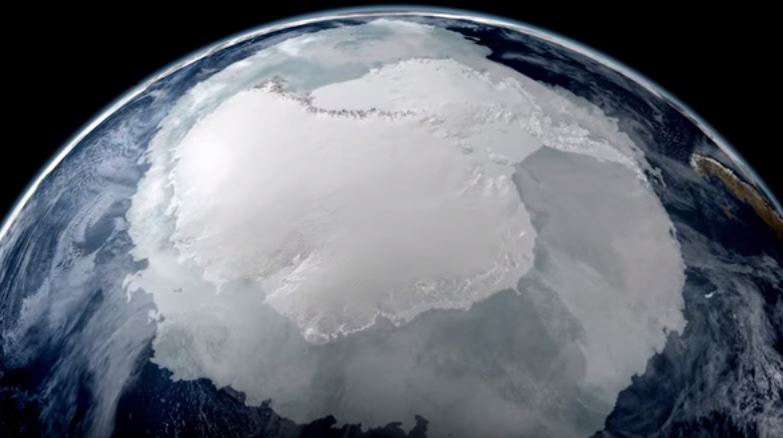Pump meltwater back on Antarctica? Do you have 850,000 wind turbines?

With sea levels rising and Antarctica's temperatures well below freezing, some people have raised the question: What would happen if we took water out of the oceans and pumped it onto the icy continent to freeze?
A group of scientists put that question to the test in a new study that explores the physical possibility and economic feasibility of geoengineering climate solutions in the future.
The results offer a warning about the costs that today's greenhouse gas emissions may be creating for future generations.
The Antarctic ice sheet is constantly flowing toward the ocean, so the scientists used an ice dynamics simulation to calculate how far inland the water would have to be sent to prevent it from re-entering the ocean for 1,000 years. The result: about 700 kilometers, and it would have to be on East Antarctica—the West Antarctic Ice Sheet would be too unstable.
What would it take to actually do that?
- Pumping enough water to prevent 3 mm of sea level rise per year—close to the current rate—would require 90 of the largest pump stations currently under construction in New Orleans, each pumping about 360 cubic meters of water per second, the authors write.
- The energy required just to pump that much ocean water 700 km inland would exceed 7 percent of the current global primary energy supply, the scientists found.
- It would take an estimated 850,000 wind turbines of 1.5 MW running on full capacity to meet that need.
There also many questions about the impact this kind of geoengineering project would have on the continent. The water would be saltwater, and it would have to be turned to snow before being returned to the surface to avoid increasing surface melting. The effects of such a "salt-ice" layer within an ice sheet are currently unknown, as are the effects of the heat from pumping all that water, the authors write. The measures would certainly put the ecosystems of Antarctica and of the surrounding ocean at risk, the authors write.
"The magnitude of sea-level rise is so enormous, it turns out it is unlikely that any engineering approach imaginable can mitigate it," said co-author Anders Levermann, a scientist at Columbia University's Lamont-Doherty Earth Observatory and the Potsdam Institute for Climate Impact Research, which led the study.
"Even if this was feasible, it would only buy time—when we stop the pumping one day, additional discharge from Antarctica will increase the rate of sea-level rise even beyond the warming-induced rate. This would mean putting another sea-level debt onto future generations," Levermann said.
A separate study released last month explored the likely effects of climate change looking out 10,000 years and highlighted the challenges ahead. Even if emissions are stopped today, sea level will continue to slowly rise an estimated 2 meters for every 1°C that global temperatures warm over pre-industrial times. If governments follow through on their current promises to reduce greenhouse gas emissions, much of Bangladesh and several megacities—including Shanghai and New York—would still be at least partially submerged over time.
The other authors of the new study, appearing in the EGU journal Earth System Dynamics, were lead author Katja Frieler and Matthias Mengel of the Potsdam Institute for Climate Impact Research.
More information: K. Frieler et al. Delaying future sea-level rise by storing water in Antarctica, Earth System Dynamics (2016). DOI: 10.5194/esd-7-203-2016
Provided by Columbia University

















